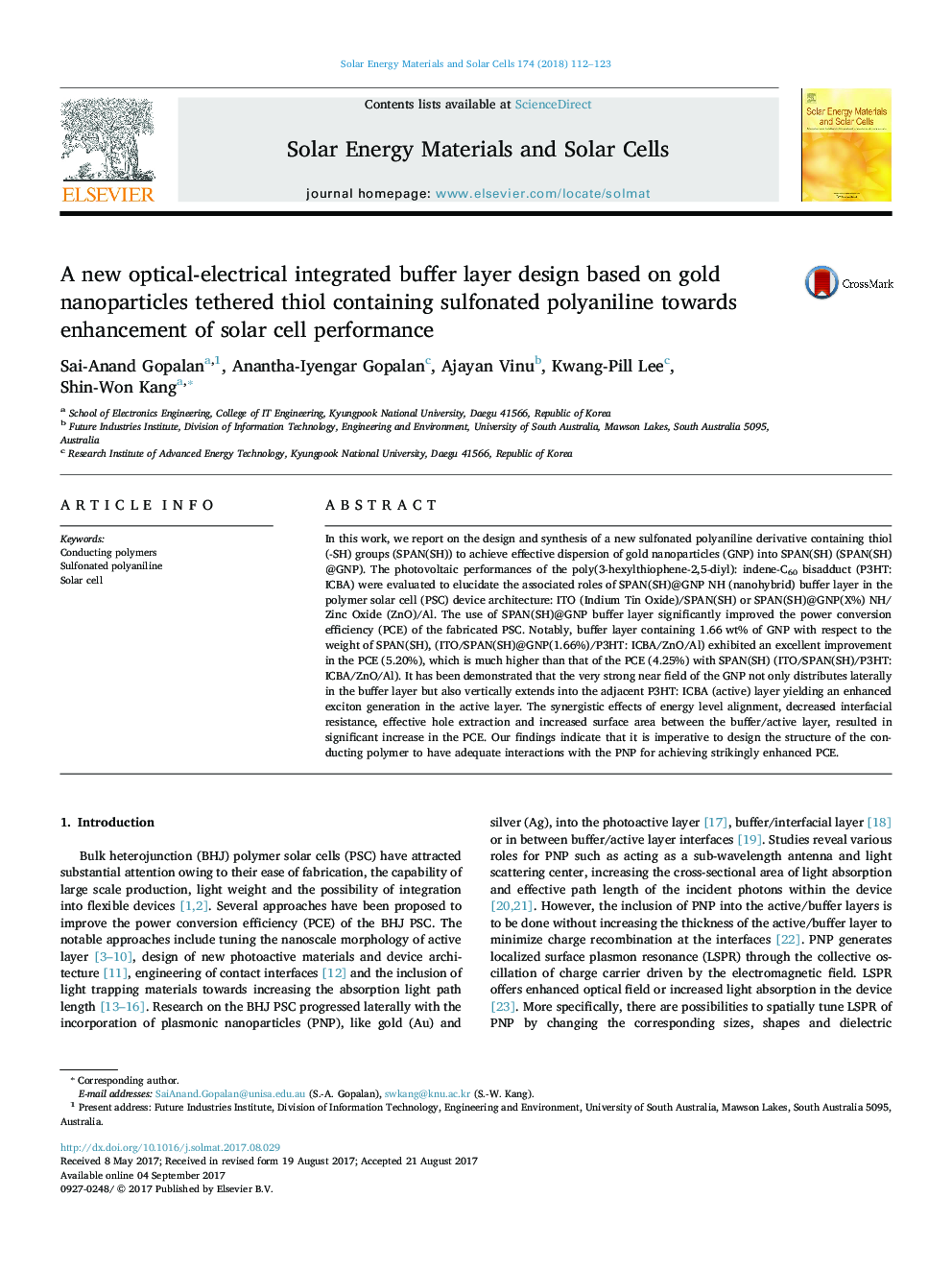| کد مقاله | کد نشریه | سال انتشار | مقاله انگلیسی | نسخه تمام متن |
|---|---|---|---|---|
| 6456633 | 1420649 | 2018 | 12 صفحه PDF | دانلود رایگان |
- Designed a new buffer layer based on sulfonated polyaniline (SPAN(SH)) buffer layer.
- Gold nanoparticles (GNP) are successfully tethered onto SPAN(SH) (SPAN(SH)@GNP) NH.
- SPAN(SH)@GNP nanohybrids (NH) exhibited superior photovoltaic performance.
- Roles of SPAN(SH)@GNP NH have been evaluated through systematic studies.
In this work, we report on the design and synthesis of a new sulfonated polyaniline derivative containing thiol (-SH) groups (SPAN(SH)) to achieve effective dispersion of gold nanoparticles (GNP) into SPAN(SH) (SPAN(SH)@GNP). The photovoltaic performances of the poly(3-hexylthiophene-2,5-diyl): indene-C60 bisadduct (P3HT: ICBA) were evaluated to elucidate the associated roles of SPAN(SH)@GNP NH (nanohybrid) buffer layer in the polymer solar cell (PSC) device architecture: ITO (Indium Tin Oxide)/SPAN(SH) or SPAN(SH)@GNP(X%) NH/Zinc Oxide (ZnO)/Al. The use of SPAN(SH)@GNP buffer layer significantly improved the power conversion efficiency (PCE) of the fabricated PSC. Notably, buffer layer containing 1.66Â wt% of GNP with respect to the weight of SPAN(SH), (ITO/SPAN(SH)@GNP(1.66%)/P3HT: ICBA/ZnO/Al) exhibited an excellent improvement in the PCE (5.20%), which is much higher than that of the PCE (4.25%) with SPAN(SH) (ITO/SPAN(SH)/P3HT: ICBA/ZnO/Al). It has been demonstrated that the very strong near field of the GNP not only distributes laterally in the buffer layer but also vertically extends into the adjacent P3HT: ICBA (active) layer yielding an enhanced exciton generation in the active layer. The synergistic effects of energy level alignment, decreased interfacial resistance, effective hole extraction and increased surface area between the buffer/active layer, resulted in significant increase in the PCE. Our findings indicate that it is imperative to design the structure of the conducting polymer to have adequate interactions with the PNP for achieving strikingly enhanced PCE.
366
Journal: Solar Energy Materials and Solar Cells - Volume 174, January 2018, Pages 112-123
